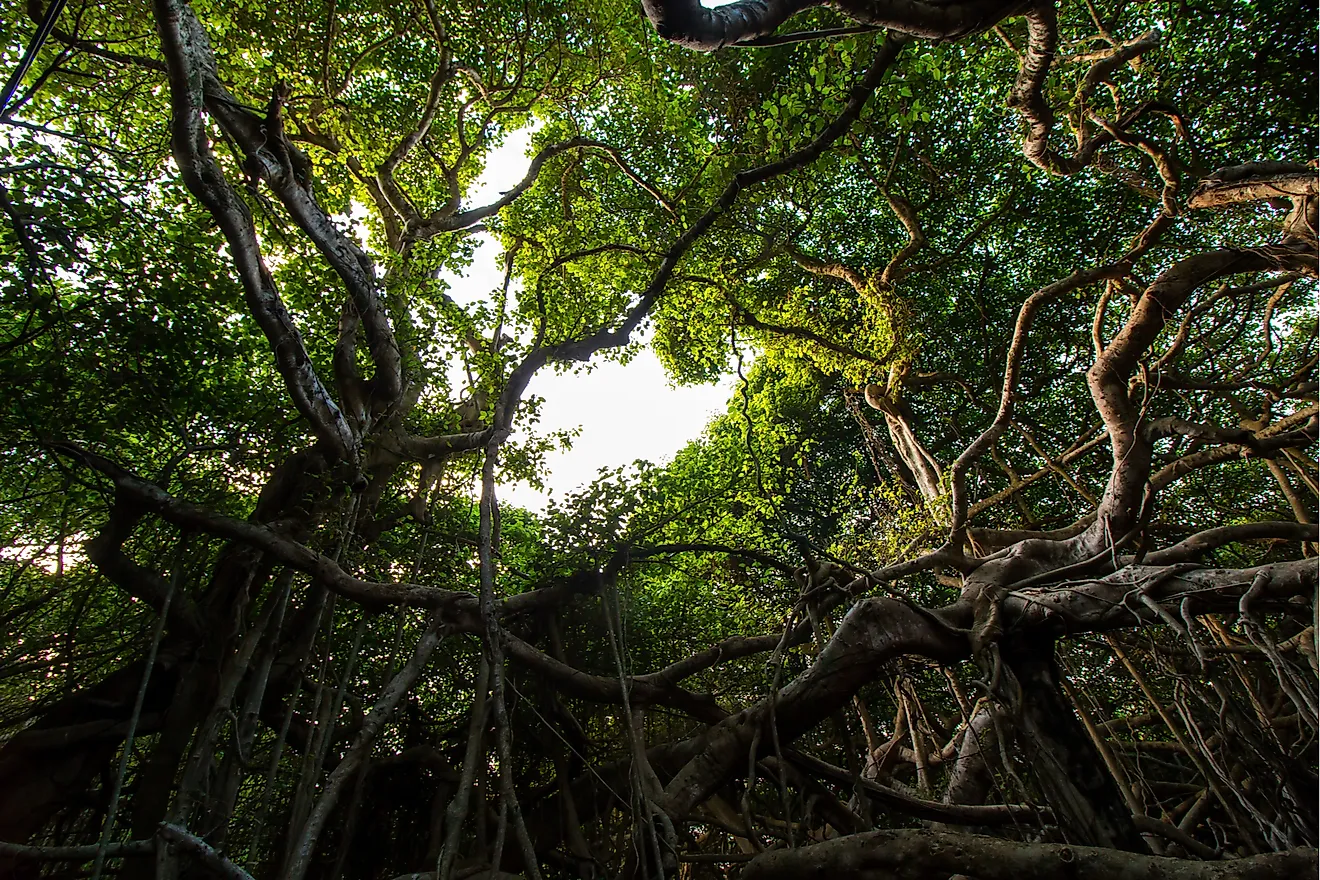The Great Banyan Tree of India

One of the oldest trees in the world, the Great Banyan Tree is a tree belonging to the species Ficus benghalensis. It spreads over an area of 18,918 square meters and is located in the Acharya Jagadish Chandra Bose Indian Botanic Garden in Howrah near Kolkata, West Bengal, India. The exact age of the tree is not known but as per historical accounts mentioning the tree, it is believed that it is at least 250 years old.
The tree has survived a great number of threats in the past like a lightning strike in 1925 which left the tree diseased. As a result, some parts of the tree had to be cut out, especially from the middle of the tree, leaving a surviving clonal colony rather than a single whole tree. Two cyclones in 1864 and 1867 also threatened the tree but it emerged largely unscathed. Today, the Great Banyan looks more like a small forest of clones with a 330-meter road constructed around it to limit its further expansion.
Tourism
Every year, thousands of tourists visit the Acharya Jagadish Chandra Bose Indian Botanic Garden in Howrah to catch a glimpse of this world-famous banyan tree. The botanical garden is easily accessible by car or bus from the Kolkata city center. The best time to visit the gardens is between September and March when temperature conditions are comfortable as the scorching summer heat is absent. Besides the Great Banyan, the botanical garden also hosts numerous species of exotic plants collected from all across the world. A visit to the garden offers tourists an escape into the heart of nature and also endows them with knowledge and information about the plants of the world.
The A.J.C. Bose Indian Botanic Garden
The Acharya Jagadish Chandra Bose Indian Botanic Garden, spanning an area of 109 acres of land, houses over 12,000 specimens of plants. It was established in 1787 by a British army officer of the East India Company. The primary aim was to build plantations of Indian spices and teak wood for commercial purposes and export. Soon, the garden started playing a very significant role in the establishment of tea cultivation in India. Tea was introduced from China to India and was grown in the garden and then supplied for cultivation in the Himalayan foothills of West Bengal and Assam. In 1793, when the botanist William Roxburgh became the superintendent of the garden, he developed a herbarium as part of the property which contained plant specimens collected from all across India. Over the years, the botanical garden kept growing and expanding and plants from all over the world were added to its repository, making it an ideal spot for nature and educational tours.
Habitat and Biodiversity
Today, the botanical gardens of Howrah host a large number of rare species of plants in its numerous glass houses, green houses, and conservatories. Trees like mango, mahogany, bamboo, teak, tamarind, and coconut grow all over the property. The garden is also famous for its collection of orchids, palms, cacti, aquatic plants, bougainvillea, jasmine, and lilies. Besides the plants, a number of animal species also inhabit the gardens with visitors recording sightings of Indian fox, the Indian mongoose, jackals, and a wide variety of snakes like the highly poisonous spectacled cobra and common krait, and other poisonous and non-poisonous snakes.
Environmental Threats
In 2013, a leading Indian newspaper reported that the Great Banyan at the Acharya Jagadish Chandra Bose Indian Botanic Garden was facing a significant amount of threat from a deadly fungal infection. The garden authorities and botanists claimed that illegal sewer pipes encroaching the garden from the nearby areas, loaded the water canal serving the botanical garden with pathogen infested sewage waters. This was probably the source of the fungal infection affecting the Great Banyan. Other plants in the vicinity were also threatened by this source of pollution. Currently, the Great Banyan is being protected by a highly efficient team of botanists and other concerned authorities who are working hard to ensure the tree survives longer to inspire thousands of tourists visiting the botanical gardens in Howrah.







